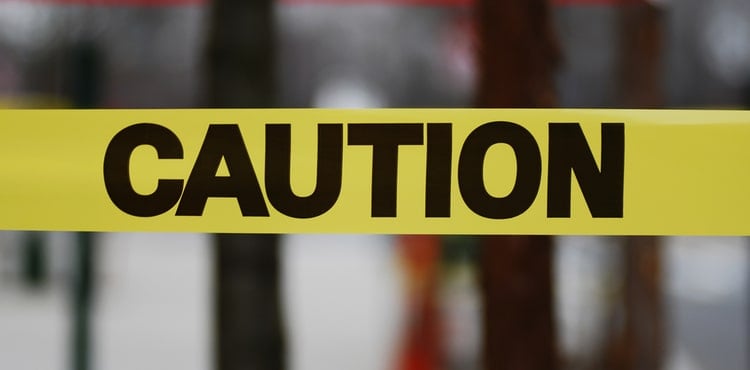6 ways to prevent customer injury and property damage

As a business owner, it’s your responsibility to keep your employees and customers safe. Unfortunately, despite your best efforts to take precautions, accidents can still happen in the workplace, and if you’re at fault, the cost of medical bills, repairs, and more can quickly add up.
Slip-and-fall accidents make up a significant portion of injuries at businesses, but they’re just the tip of the iceberg. A number of other incidents can fall under premises liability, including chemical spills, accidents involving equipment, or an employee or visitor injuring another person.
Key to preventing such mishaps is to identify and eliminate the risks and routinely inspect your workplace. Here are six steps you should take to protect your employees, customers, and business:
1. Inspect your premises regularly and look for potential hazards
The best way to prevent bodily injury or property damage is to regularly inspect your workplace to assess potential risks. Inspections should be scheduled at regular intervals, such as weekly or monthly, but you should also conduct unexpected inspections so that you can see what the workplace typically looks like without being tidied up in advance.
2. Maintain your tools and equipment
Without proper maintenance, your business’s tools and equipment can become faulty or break down, which puts employees and customers at risk. Clean tools and equipment on a regular basis, and consistently test them to ensure they’re operating safely and functioning properly.
3. Document inspections and keep a record of repairs
Keep meticulous records of all your inspections, repairs, and incident investigations. Maintaining records of such information can help you keep track of recurring incidents and help you identify the areas with the highest potential for risk.
4. Post warning signs if there is a problem or hazard
Make sure your workers know that if they spot a hazardous condition, they should report it immediately. If there’s an unsafe condition in your workplace that can’t be fixed right away, you’ll need to post warning signs to warn employees and customers of the potential hazard. A good example is setting out a “Caution: Wet Floor” sign if the floors have recently been mopped.
5. Ask customers to sign waivers and alert them of possible dangers
If your business involves inherent risks – e.g., certain sporting or athletic activities – you may ask people to sign waivers or post signs warning of innate risks. But be aware that state laws will vary on the requirements for such waivers and whether or not they can be enforced. It’s also important to note that inherently risky ventures will likely face higher small business insurance premiums.
6. Have adequate insurance coverage in place
Claims arising from business liability incidents can be costly. General liability insurance can cover the medical expenses for a customer who is injured on your premises or at your worksite. It can also provide means for a legal defense if that customer decides to sue. Additionally, this coverage may pay to repair or replace customer property that you accidentally damage.

Compare quotes from trusted carriers with Insureon
Complete Insureon’s easy online application today to compare insurance quotes from top-rated U.S. carriers. Once you find the right policy for your small business, you can begin coverage in less than 24 hours.
Desiree DeNunzio, Contributing Writer
Desiree is a writer and editor with a passion for bringing relevant content to readers. She's edited and written content for online and print publications such as Wired magazine, PCWorld, CNET News, and more.







